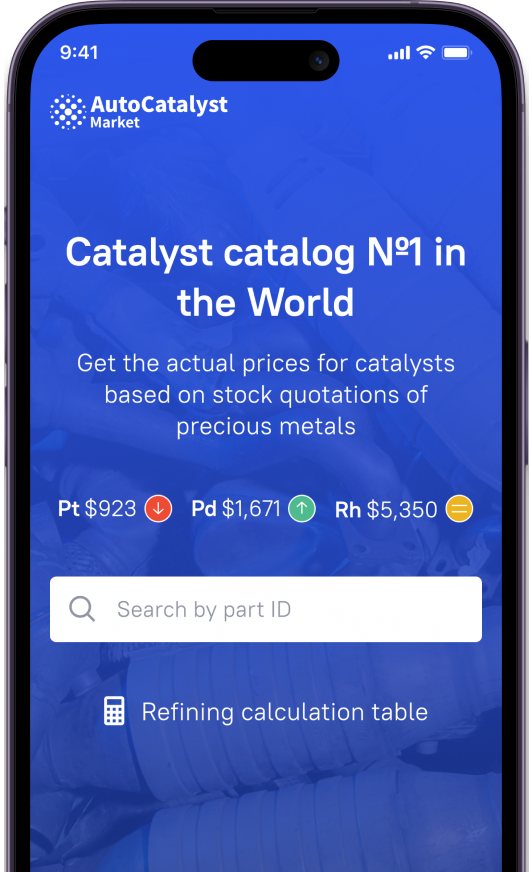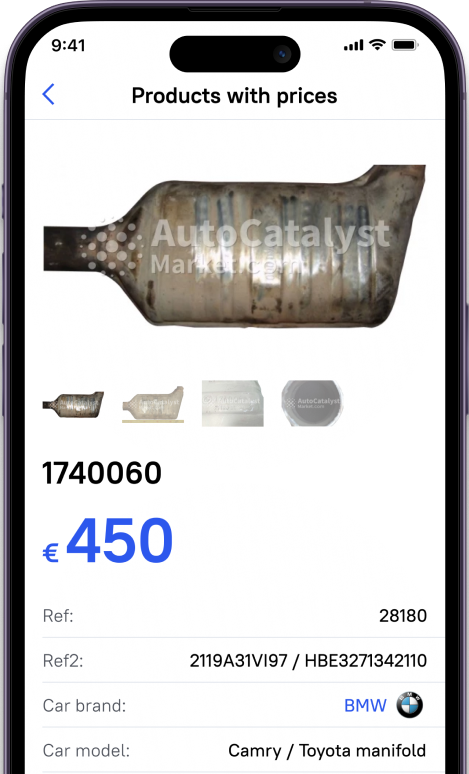- Understanding the vital role of catalysts
- Catalytic converter operation process
- Another reason to change the catalyst:
- What you can do with a failed “catalyst”?
- Catalytic converter price is determined by:
- Important conditions for possible purchase of a catalytic converter are:
- The catalyst cost highly depends on the brand
Understanding the vital role of catalysts
In Europe, obligation to equip all cars with a catalytic converter appeared back in mid-1990s. The USA started using catalysts much earlier, having realized in a timely manner that something needs to be done with harmful substances in the exhaust gases of vehicles. Other countries had no obligation to install exhaust catalysts, until the end of the 1990s. And only with the advent of unified customs regulations everything began to change. As a result, today almost all new transport is equipped with catalytic converters.
Most car owners remember or learn about the existence of a catalytic converter in the exhaust system only when they hear a phrase like “your catalyst is dead” from a mechanic. In this case, catalytic converter should be professionally recycled. Catalytic converter is a detail of the exhaust system, which is responsible for eliminating in gases and substances harmful to humans and environment in general as hydrocarbons not burned in cylinders, soot, carbon monoxide CO and nitric oxide NO. All these substances are forced burned out, turning into much less chemically aggressive substances: water, CO2 and nitrogen. This is due to chemical reactions occurring in catalysts with the help of radium, palladium and platinum.
Catalytic converter operation process
Catalytic converter is a simple device where a complex chemical process proceeds. Usually it is a stainless steel case, inside filler, metal or ceramic, with a honeycomb structure. Due to this, a huge area of active surface is covered with a thin layer of an alloy of platinum, rhodium and palladium. Catalytic reaction begins when the temperature reaches 270 degrees Celsius, as a result of interaction of exhaust gases with the surface of the catalyst. Carbon monoxide turns into dioxide, hydrocarbons turn into water and again carbon dioxide, and nitrogen oxides turn into water and nitrogen. As a result, it is possible to achieve a high degree of purification of exhaust gases and neutralize harmful substances.
The process goes while the exhaust gases move through the fine-meshed ceramic or metal cells inside the “barrel” of a catalytic converter, coated with an alloy of these rare-earth metals. Catalyst is an expensive and relatively short-lived part. Even in the best case, few neutralizers will “live” more than 120,000 km. run. Usually they fail for several reasons. Ceramic catalysts can be destroyed at an accelerated pace when the vehicle often drives through serious bumps. Due to shaking and bumps, thin walls of honeycombs corny crack and chip.
Another reason to change the catalyst:
-
engine problems in lubrication system,
-
cylinder-piston group,
-
ignition,
-
unburned fuel and oil.
Approximately the same effect is obtained by excessive pressing of a gas pedal.
A catalytic converter that has collapsed or clogged with deposits will not only cease to fulfill its function, but will also greatly complicate the exhaust gas exit from the engine. It leads to a noticeable loss of engine power.
What you can do with a failed “catalyst”?
The first thing that comes to mind is to replace it with the same, but only a new one. This is the most expensive option. Prices for new branded catalytic converters differ and require urgent solutions to earn extra money for such a move.
Get acquainted with a professional team which is ready to purchase your old catalyst helping you to cover replacing costs. Main advantage of such a company is accurate analysis using the best computing equipment, as well as instant payments.
Catalytic converter price is determined by:
-
type of material: ceramic or metal;
-
brand of the transport,
-
year of its manufacture;
-
type and engine size.
Ceramics have a different price category, so if you want to hand over several items, you must keep each separately from the other.
Important conditions for possible purchase of a catalytic converter are:
-
natural humidity of ceramics, presence of soot;
-
lack of asbestos;
-
integrity by which it is easier to recognize the type of catalyst.
The catalyst cost highly depends on the brand
Approximate purchase rating cost will be as follows:
-
German cars.
-
Japanese transport.
-
French production. Such catalysts contain slightly fewer precious metals, which affects the catalytic converter price.
-
American vehicles.
-
Korean production.
-
Transport produced in Eastern Europe (Russia, Ukraine).
Relying on the purchase price rating, one should not forget that catalytic converters price varies depending on the year of manufacture. The mechanism of the same vehicle, released in 1997 and 2005, cannot be sold at the same price.
Ceramic items has a fairly high amount of materials. Such catalytic converter is very easy to sell, despite its damaged look and form.
Remember that handing over catalyst for recycling, you make the most correct decision. Proper disposal of old, damaged and broken parts is of great importance. Ability to get paid for it is a great bonus.


































